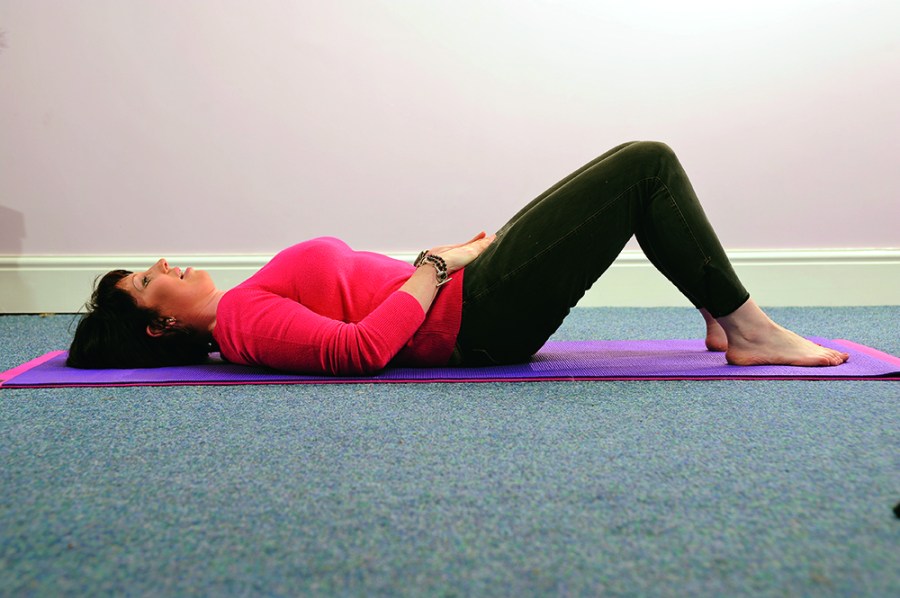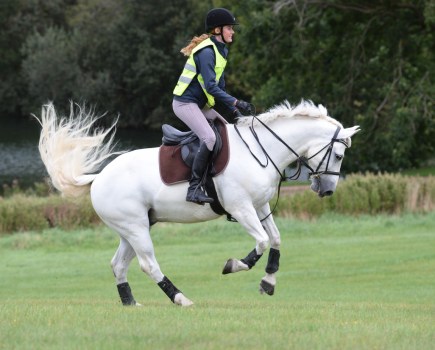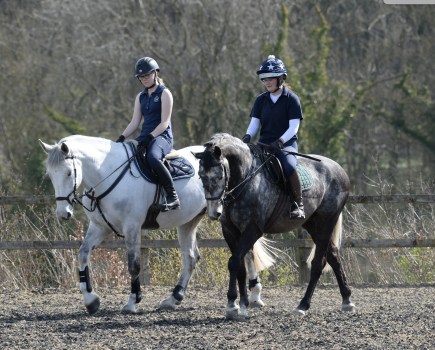The key to feeling safe and in control, whatever your pace or discipline, lies in your core strength. Improve this and you’ll become a better, more effective rider in an instant. Want to know what sports or exercise will help you to improve your core for riding? Read on….
Straightforward Pilates offers a great way to work on your strength and flexibility, but Lindsay Wilcox-Reid has developed her own version, entirely dedicated to riders. Through Equipilates Lindsay teaches riders to control their core in order to find the best possible position. She also gives one-on-one tuition to help riders apply what they’ve learnt to their riding, in the saddle.
Here she suggests some easy-to-do-at-home exercises*.
“The core stability muscles (transversus abdominis, obliques and mid/lower trapezius) are all used to keep the body in correct alignment once established. These are particularly necessary when your horse (or you) is likely to lose balance, such as during transitions or changes of rein,” says Lindsay. “If you’re correctly aligned and balanced you’re easier for your horse to carry. So by working on the following exercises you can strengthen your core and become more aware of what your body is doing when you ride.”
First, find your neutral spine
Neutral spine, or more specifically in relation to the upcoming exercises ‘neutral pelvis’ describes the correct alignment of your body and should be the basis for every exercise you do. To achieve neutral pelvis, your pubic bone and hip bones must be on the same horizontal plane:
- Lie flat on the floor with your knees bent and your feet flat to the ground (this is your start position).
- Place the heels of your hands on your hips bones while extending your index fingers to your pubic bone and flattening your thumbs to your stomach to create a triangle shape.
- Imagine that a bowl of water rests on the triangle and by tilting your pelvis back (so your spine flattens to the floor) the water would spill onto your stomach. The water will spill onto your legs when you tilt your pelvis forwards.
- Try to tilt the imaginary bowl in each direction a few times until your hip bones and pubic bone are on the same horizontal plane. In this position no water would spill form the bowl and you’re in neutral.
Ex 1. The pelvic tilt
This exercise will help to strengthen your core in a way that will improve your ability to control the position and alignment of your pelvis in the saddle.
· Adopt your start position and find your neutral pelvis.
- Take a breath, then as you exhale tilt your pelvis back (spilling the water from the bowl onto your stomach).
- Breathe in once more and as you exhale return your pelvis to neutral.
Tip: Keep your tummy very hollow – if you find that it bulges out you’re using the wrong muscles.
Ex 2. Leg float
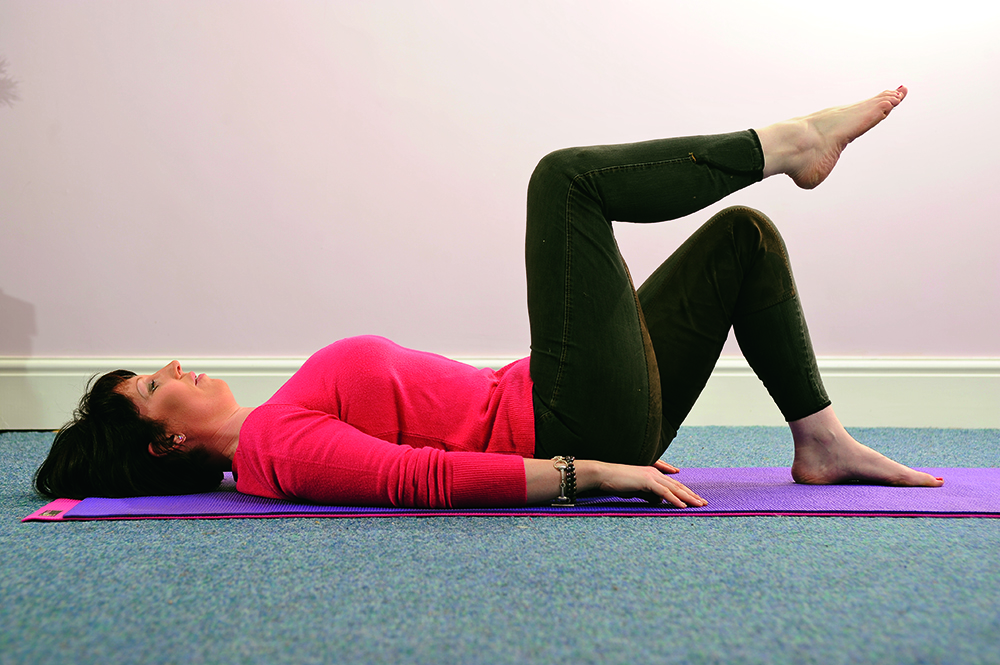 This exercise will challenge your abdominal (transversus abdominis) and pelvic floor muscles.
This exercise will challenge your abdominal (transversus abdominis) and pelvic floor muscles.
- Adopt your start position and find your neutral pelvis.
- Breathe in, then as you breathe out, gently bring your left leg up into the air, with your knee bent at a 90 degree angle. Stop when your lower leg is parallel to the ground.
- Breathe in then slowly bring your foot slowly back down to the floor as you breathe out.
- Change legs and repeat.
*To increase the difficulty, lift both legs simultaneously while in a pelvic tilt.
Tip: There should be no movement of the pelvis whatsoever so to feel for any unwanted movement keep your fingers on your hips throughout.
Ex 3. Arm float
The arm float strengthens you upper abdominal muscles helping to straighten out a hollow back.
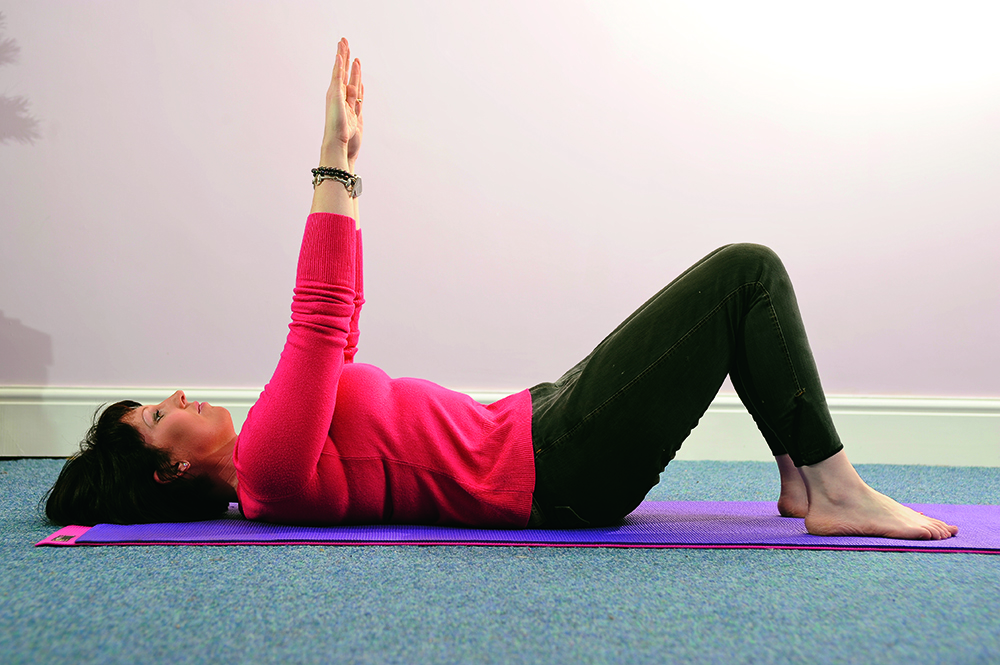
- Adopt your start position and find your neutral pelvis.
- Breathe in, then as you breathe out, gently bring your arms up into the air.
- Breathe in again then slowly bring your arms back down to the floor as you breathe out.
*To increase the difficulty, lift both arms simultaneously then lift your head up and forward.
Ex 4. Spine twist
To be able to effectively ride your horse on circles, in the correct position, you need to be able to rotate your upper body independently from your pelvis. The ‘spine twist’ can be used to strengthen and stretch your oblique muscles making this easier to do.
- Establish your start position and neutral pelvis.
- Bring your palms together as if you’re about to pray and your thumbs towards your body, pressing them to your sternum.
- Gently squeeze your shoulder blades together at the back to open your chest.
- Keeping your eyes forward and your nose in line with your thumbs, turn your upper body, as far as it will go, to the left then to the right without moving the ball.
*As seen in Your Horse magazine.
GIVE BELLY DANCING A GO!
Some of the skills used in pilates such as muscle rotation, flexibility and use of all the different abdominal and back muscles are also used in belly dance. So, if you’re looking for a fun alternative to pilates or the gym, find a class in your local area and give it a go.
Find out more about Lindsay Wilcox-Reid
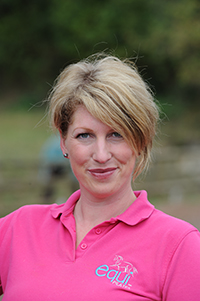
Lindsay Wilcox-Reid
To find out more about Lindsay and her work, visit her website www.equipilates.com. there you’ll also find information on her three great books: Pilates For Riders, Core Connection For Horse and Rider and Improve Your Position: The rider’s ABC

